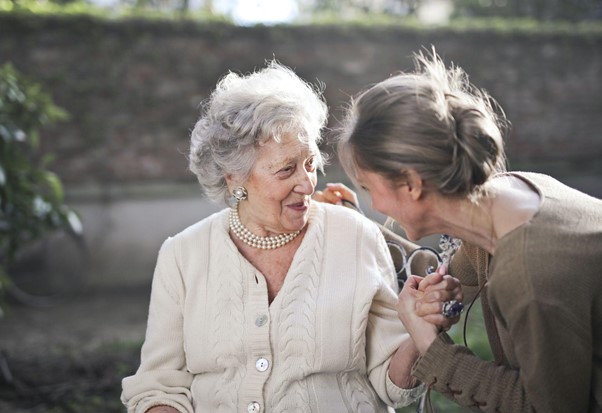How Do You Prepare Your Home When a Senior Loved One Is Moving In?

This guest article is from Sheila Olson of fitsheila.com. For more information about Ms. Olson’s work, check out her website or contact via email info@fitsheila.com.
How Do You Prepare Your Home When a Senior Loved One Is Moving In?
Having a senior loved one move into your home is a major transition for you both. If you want to make the change as comfortable as possible, preparing your house for your loved one’s arrival is wise. If you aren’t sure how to get started, here are some tips (presented by Reel Property Solutions) for getting your home ready for your senior loved one.
Carve Out a Personal Space
If your senior loved one previously lived independently, losing their autonomy may be hard for them. Ideally, you want to ensure that they can maintain a sense of independence, even if they’re living under your roof. One easy way to do that is to carve out personal space for them whenever possible.
While giving them their own bedroom is the obvious starting point, consider going further. Allowing your loved one to have a bathroom that only they use could give them extra privacy, making them more comfortable. Designating a kitchen cabinet, fridge area, and spot in the freezer as theirs may also be a smart move, ensuring they have a special place to store their favorite treats that others won’t touch.
Reduce the Risk of Falls
Falls are common among seniors in the United States. Overall, over one in four adults age 65 and older experience a fall annually. Additionally, 3 million older adults are treated in emergency rooms for fall-related injuries each year, and about 32,000 seniors die due to injuries sustained due to falls.
If you’re moving a senior loved one in, make sure you reduce fall risks as much as possible. Since stairs can be particularly dangerous, install sturdy handrails for support. Additionally, make sure any stairways are well lit, hiring an electrician to install new bright lights at the top and bottom of the stairs if your lighting is lacking.
In some cases, you may want to install a stair lift if your loved one will need access to multiple floors in your home. Adding ramps to your home’s exterior could also be wise if there are stairs.
You’ll also want to go through your home to eliminate tripping hazards. Ensure items aren’t stored on the floor, particularly in an area with tighter walkways like halls.
Finally, install grab bars in your bathrooms to give your senior loved on an easy way to maintain their balance. If you can tackle a full bathroom remodel, you may want to replace a traditional bathtub with a walk-in tub or go with a no-threshold shower to reduce tripping and falling risks.
Make Your Home Accessible
Mobility devices like wheelchairs and walkers are typically pretty wide. As a result, they may not fit through some doorways or halls, have trouble navigating narrow kitchens, or struggle to get around furniture, depending on its position.
If your loved one is using a mobility device, ensuring that doorways they’ll use are at least 32 inches wide is best. Additionally, make sure they’ll have at least that much clearance around furniture, in the kitchen, and through hallways. That way, they can get around with ease.
In some cases, you may even want to lower specific counters. For example, most kitchen cabinets are 36 inches high, which may be too tall for some seniors to reach if they use a wheelchair. As a result, you may want to lower them to between 28 and 34 inches – depending on their height, reach, and the size of their chair – to make the counters more accessible.
In addition to this resourceful article and contacting Reel Property Solutions, LLC, reach out to Rochelle who is a licensed real estate agent with eXp Realty.
info@reelpropertysolutionsllc.com 507-218-8788
rochelle.markov@exprealty.com 507-358-0638

